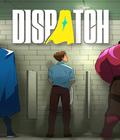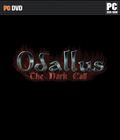The last few years have seen a resurgence in games that embraced the 2D viewpoint and the accompanying design sensibilities and mechanics. Many games could only have been conceived with modern hardware, but there were a few titles, such as Shovel Knight and Axiom Verge, that completely embraced the old aesthetics. New gamers could easily have thought the titles were re-releases or gussied-up ports of older titles. Odallus: The Dark Call also falls into this camp.
You play the role of Haggis, an unfortunately named retired soldier whose wife passed on years ago. You take care of your son by hunting for food in the woods. One night, as Haggis sits by a campfire, he hears a noise in the direction of his town. He arrives to find his town ablaze and his son missing. Having seen that monsters are the cause of this, he vows to hunt them down and rescue his son.
Though the story seems fairly standard, it is the presentation of the tale that will impress classic gamers. Most of the story is told via dialogue boxes, and portraits of the speaker only appear before and after boss fights. There's a good deal of these scenes but not enough to hamper gameplay. For major scenes, the game goes for the full-on cinematic approach, similar to the original Ninja Gaiden games. Loads of big sprites and fast-scrolling backgrounds make the tale feel important enough, so even those who don't care for it will at least give it a cursory glance.
The mechanics can be best described as a Metroidvania style of adventure but with more of an emphasis on the Castlevania aspect, particularly the early entries before Symphony of the Night. You may have a sword instead of a whip, but you still have a short attack delay, so there's a little bit of planning when it comes to unleashing an attack. You've got extra weapons you can pick up, like an ax that acts like a boomerang, a spear with good height but poor distance, and a torch that's like a fire bomb. Those items are limited, but you can switch to any of them at will. While combat may be reminiscent of the classic Konami title, there are some tweaks for the sake of added mobility, like the ability to grab ledges and jump at great heights.
Elements from other adventure games are also present. You have currency in the form of orbs, which can be obtained from treasure chests or downed enemies. The currency can be used with a shopkeeper that you'll meet at various points in each stage. He only offers four items at a time that can range from weapons to extra lives, but the one constant is that prices are raised every time an item is purchased. You've also got a world map that does a good job of keeping track of your progress. Specifically, you can see how many secrets you've discovered per level and whether you've already killed the boss there. It allows for some easy backtracking when the time comes to do so. There are some parts of a stage where you'll depend on vehicles, and there are some water stages where survival requires you to constantly seek out air pockets, so you can jump and take a breath to reset the countdown timer.
As for the Metroid influence, it comes in the form of new items and backtracking. For the former, this means finding upgrades so you can hold more weapons and withstand more hits. It also means finding permanent relics, like a bracelet to let you push heavy blocks or a pendant to let you breathe underwater. The levels also show you a good deal of areas you can't reach at first, since you don't have the correct equipment. Some lead to upgrades or chests with more orbs, while others lead to entire stages that are necessary to gain access to the final stage. Luckily, the game makes the act of backtracking easier by letting you leave a stage at any time to return to the map. It isn't a perfect means of solving the backtracking issue, but it is a great deal better than traversing each world with no shortcuts.
Level design is done in a way that encourages exploration yet ensures you never get completely lost. You're somehow always funneled toward the stage boss or a new section, and there's always more than one pathway available, so you can reach your destination even if the cues aren't always obvious. The enemies are challenging, but they have distinct patterns, so they are easily handled if you can read them right. The same goes for the bosses, both of the mid- and end-level variety, though they have more patterns, and a few have weak spots that change location. When combined with the familiar but solid combat system, it makes for an overall satisfying experience.
Since Odallus tries to ape classic adventures games, you may think that it tries to present the player with a near-impossible challenge. Truthfully, the title actually tries to be inviting to players of a wide range of skill levels. For starters, the game is great about having decently spaced checkpoints and ensuring that levels don't go on for too long. The title also saves automatically every time you leave a stage, so you don't lose too much progress should you run out of lives.
More importantly, the game does its best to avoid annoying mechanics that can easily result in cheap deaths. Getting hit will knock you back, but the distance is so short that you may not even notice the knockback mechanic in the first place. You'll also get an invincibility blink for a short period, so there's no chance of getting bounced around by surrounding foes. There are also no bottomless pits, so falling from great distances either lands you on solid ground or spikes, but the latter gives you a chance to escape instead of treating you to instant death. In the few stages that feature pits, you're simply sent back to the beginning of that section if you fall, and the penalty is only a sliver of your health. Even if you bump things up to veteran difficulty, you'll just encounter monsters that take more hits to kill. Overall, the game presents a challenge that is fair instead of one that favors enemies over you.
The only complaint that can be levied against the title is that it is rather short. The medium difficulty level and lack of cheap death mechanics mean you can tackle the main missions in about six hours or less, with a little more time spent on uncovering every single secret. While this seems a little below average for a modern title, keep in mind that some of the classics in this genre from the appropriate time period would've taken the same amount of time if they were afforded the modern conveniences on display here. More importantly, though the playtime will tell you differently, the game doesn't feel too long or short, so there's never a chance for boredom to set in.
Graphically, the game completely embraces the NES look. There's a lot of black, a limited color palette, and loads of repeating tiles. Effects like falling snow come off as pretty simple-looking stuff, while the wavy screen when you're underwater shows some technical prowess. Backdrops are also multi-layered, but it feels more like a late-era NES title than something modern. Meanwhile, your character is decently sized with decent animations, while the monsters tend to use one unified color mixed with whites and blacks to give them a more grotesque definition. Adhering to authenticity, the game is even displayed in 4:3 ratio, with the extra space on the sides being used as placement for important information in the HUD. Except for the last part, this is easily a game that looks like it was made for a classic console.
Likewise, the sound feels like it was pulled directly from the classic gaming time period. There aren't many voices, but they are presented in a completely garbled way that doesn't resemble a familiar language. The effects are authentic 8-bit material, while the music has the same vibe as some of the older, darker adventure games. The tracks are upbeat enough to motivate you to progress, but every piece has a foreboding element that prepares you for the horrible creature you may encounter.
Odallus: The Dark Call is a great adventure game that hearkens back to the 8-bit era. Combat is fun, and there's a good balance to the difficulty; bosses, save for the final one, can be defeated once you know their patterns. It isn't a very long game, but it still feels like it's an appropriate length, especially with each stage's secrets and hidden paths. With a presentation that can fool anyone into thinking this is a long-lost classic, Odallus does everything well. Fans who adore adventures games of that console era should definitely grab Odallus.
Score: 9.0/10
More articles about Odallus: The Dark Call











 A Dark Lord and his army are destroying villages and leaving no soul alive. To put a stop to this carnage, a warrior named Haggis must wield his blade and chase down the Dark Lord.
A Dark Lord and his army are destroying villages and leaving no soul alive. To put a stop to this carnage, a warrior named Haggis must wield his blade and chase down the Dark Lord.







































